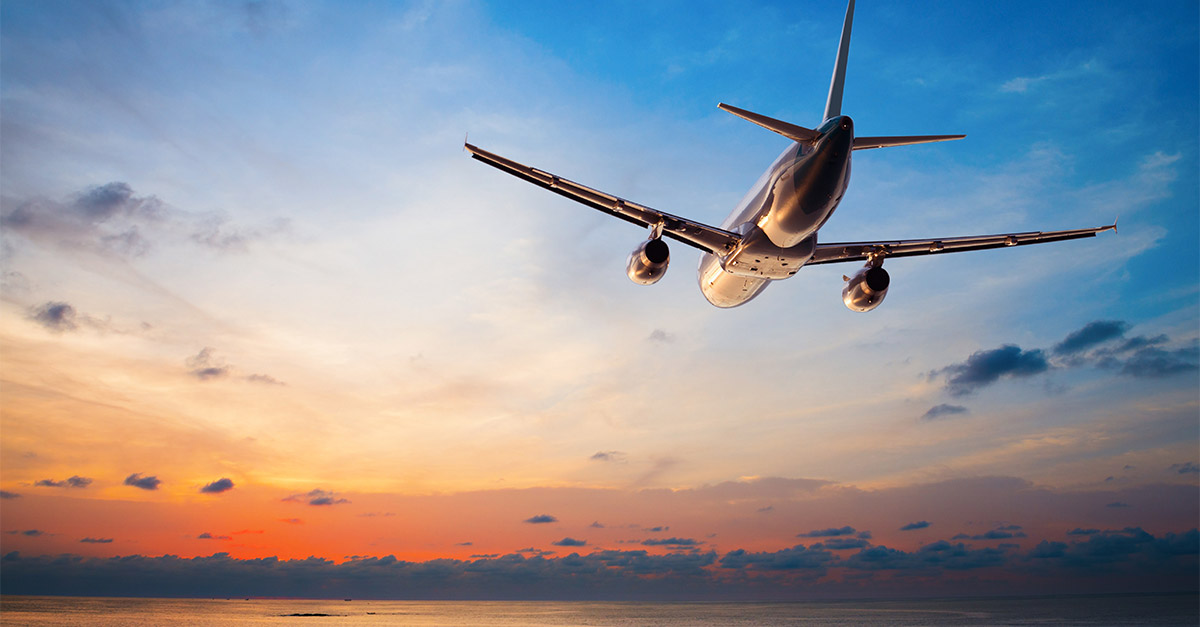May 19, 2023
Transforming Travel Loyalty Marketing
By Liza Colburn

Airlines pioneered travel loyalty programs more than a generation ago with the first offers for frequent flyer miles. Over time, these plans proliferated, for both the business and the leisure traveler. In response, travel and hospitality companies are transforming travel loyalty marketing programs to create better value for all customers as well as for the travel companies themselves.
With demand for travel now above pre-pandemic levels, travel companies need an edge. They also need to differentiate, given that the motivations for travel vary widely by consumer segment, according to a new survey of 600 US adults from Persado.
Here, we offer a look at what is happening and how marketing messaging using advanced technologies like Generative AI can help.
Travel Loyalty Challenges
In 1979, Texas International Airlines introduced the first frequent flyer program based on miles accumulation. This was a response to the 1978 Airline Deregulation Act, which did away with government-mandated pricing by route and paved the way for travel loyalty programs offering favorable pricing, discounts, or free flights. (Texas International merged with Continental three years later and had a later M&A with United Airlines.)
Almost every travel company today maintains some kind of customer loyalty program. They range from basic points-based plans to more complex tier-based programs with buy-in options. What most travel loyalty programs have in common, however, is that they are often opaque about how you accumulate benefits, how you use them, and whether any of it translates into a better experience. Inconsistent communication only makes this disconnect worse. The result is often frustrated travelers who feel like their travel loyalty programs aren’t delivering the better service and perks with less hassle that they were promised.
Research by Deloitte uncovered four fundamental challenges that travel companies face. These are influencing travel companies and transforming travel loyalty marketing.
1. Continued fallout from the pandemic
The lingering effects of COVID-19 puts trust and confidence to the test as consumers engage with brands in nontraditional ways. The big questions remain: Will business travel return to pre pandemic levels? And can travel companies shift to meeting the expectations of the more segmented consumer market?
2. Lack of clarity about structure
What’s missing from most loyalty programs is intentionality. Many brands jumped in without committing to a long term vision. As a result, many programs have grown stale and lost their competitive edge, and the companies aren’t adopting new solutions and advanced technologies to refresh them.
3. Enormous competition
The proliferation of brands and travel loyalty programs makes it harder to create distinct experiences as nontraditional competitors continue to gain share.
An example of nontraditional programs is transferable bank rewards. This is considered the gold standard of loyalty currency. Travelers can exchange them for airline miles or hotel points, usually at a 1:1 ratio or better.
Not to mention almost every travel & hospitality brand big and small also has a competitive loyalty program.
4. Consumer expectations
Travelers want more attention than ever before, which puts pressure on travel brands to differentiate and connect to consumers in more personalized ways.
Start Giving Travelers What They Want
To address these challenges, travel loyalty marketing needs to holistically look at what they offer in their current loyalty programs and where they need to transform them to deliver to both a different target customer and ever-evolving customer expectations.
Accenture’s 2022 research report on transforming travel loyalty programs and marketing identified three things that travelers want from loyalty programs:
- Immediacy
- Reliability
- Flexibility



Source: Accenture
How can travel loyalty marketing teams fulfill these customer expectations? First, by anticipating customer behavior shifts. Travel companies must do a deep dive and reevaluate the needs and expectations of their ideal customer. Using these insights, travel players can develop more valuable insights to reclaim their role as loyalty pioneers. It’s all about transforming the value proposition, program innovation, and providing personalized experiences at scale.
Steps Towards Transforming Travel Loyalty
Loyalty programs and travel loyalty marketing should constantly evolve in response to travel trends and new opportunities. To be successful, they must adhere to a set of moving parts, both tangible and subjective. Deloitte’s travel research team established the following factors that influence travel loyalty program design.
#1 Match customer behaviors to a travel value proposition.
Leading loyalty programs start by clearly defining success metrics and identifying the traveler behaviors they want to motivate.
For example, do they want to serve as the gateway for more add-on purchases such as tours, tickets, or meals? Do they want to encourage more upgrades? Do they want to let travelers share loyalty rewards with family members?
The resulting travel loyalty programs incentivize the actions they want to see. Start by answering the following questions:
- What’s your business goal for the loyalty program?
- What key metrics will define and quantify the success of the program?
- What customer segments represent the most value?
- What customer needs and behaviors can accelerate the path-to-purchase?
- What new customer loyalty program features will unlock the most value?
- What channels and partners can our brand leverage for go-to-market success?
#2 Deliver a portfolio of compelling benefits and interactions.
A successful portfolio of meaningful benefits differentiates your travel loyalty program. Determining what travelers want and offering perks can invite both short-term purchases and build long-term emotional connection to your brand.
Credit card travel points programs like that of Chase Sapphire Reserve are brand agnostic, which is one of the main reasons they are competitive. Travelers receive optimal rewards through Chase Ultimate Rewards from credit card spend at any hotel, restaurant, or travel-related purchase such as a car rental.
Having multiple properties/offerings under the same umbrella can go a long way in adding value to in-house travel rewards programs no matter if it’s the standard rewards program or one associated with a corresponding credit card. A great example of this is Marriott’s Bonvoy program. Marriott, with a portfolio of more than 7,000 properties and resorts, incorporates its vision statement “To be the World’s Favorite Travel Company” into its rewards program. Their brands run the gamut from extended stay to luxury hotels. Points accumulate with stays and through everyday purchases with co-branded credit cards.
Partnerships help build the portfolio
It’s also important to establish partnerships in order to bring additional value to your program. Here are some great examples of travel rewards programs partnerships:
- Through the Hilton Honors + Lyft partnership, Hilton Honors members can link their accounts with their Lyft accounts and earn Hilton Honors points for spending on Lyft rides. They can also redeem Hilton Honors points for Lyft credits.
- Delta allows SkyMiles members to earn miles with their airline partners; there’s a similar arrangement for United Airlines and the Star Alliance members. In practice, you don’t have to be on a Delta flight to earn SkyMiles or a United flight to earn Star Alliance points. They can also be earned on other airlines. Delta SkyMiles also has a ride reward program with Lyft where members can link their SkyMiles and Lyft accounts and earn 1 mile per $1 spent on Lyft rides in the U.S.
- Starbucks Rewards also partnered with Delta SkyMiles. Members can link both accounts and earn one mile per $1 spent at Starbucks and double Stars on days traveling on Delta.
- The World of Hyatt loyalty program has many partnerships, including American Airlines AAdvantage, and MGM Resorts. They offer multiple opportunities for earning or redeeming World of Hyatt points with brands, services, and experiences that the end customer is also interested in.
Strategies for expanding a travel loyalty program
When looking to expand or bring added value to an in-house travel rewards program, consider the following:
- What rewards do you currently offer? These may include points, discounts, cashback, or other immediate benefits for spending with the brand.
- Define the traveler experience. Exclusive sales, tier-level benefits, and engagement opportunities.
- Incorporate lifestyle influences. Present events and create content that reflect your customers’ hobbies and lifestyle choices. Show travelers you are thinking about them throughout the year, not just during travel.
- Curate a collective identity for your brand. Build a community of like-minded travelers. Give them opportunities to share experiences.
- Align your company’s vision with the loyalty program. The most successful travel loyalty programs align with a brand’s mission with what your customers care about.
- Identify partners that drive mutual value. If you’re a cruise line, consider partnering with an airline where mutual customers can earn and redeem points. Chances are travelers need both services when going on vacation. It makes sense to do some cross promotion and offer rewards to customers using your preferred airline. It’s all about finding services and experiences that add value and convenience to the end customer.
It’s great to have a portfolio of travel & hospitality brands that work together to drive value in a travel loyalty program. Partnerships with other brands can also fill this gap and serve as great co-marketing opportunities. The best results for travel loyalty programs come when companies deliver a range of tangible and emotional benefits, some of which can be delivered in collaboration with partners.
#3 Engage the customer throughout their active journeys and build new connections across the customer lifecycle.
Loyalty programs should not feel like an add-on. Instead, travel brands should thoughtfully integrate loyalty promotions and reminders into the company’s messages to enhance the broader experience.
To do that, travel brands need to understand what customers want when they are actively purchasing. They also need to engage when travelers are inactive, so they can design messaging to encourage engagement. Since travel fluctuates for most consumers, the brand should focus on the lifetime experience, not just on the sale and trip.
Think about:
- Leveraging the latest technology for both communications and operations of the program.
- Developing the best operating model to create seamless customer experiences.
- Being customer first by focusing on evolving needs, behaviors, and expectations across physical and digital touchpoints.
- Develop and scale new customer loyalty program features that appeal to the evolving travel customer.
Using Generative AI and Personalization to Help Transform Travel Loyalty Marketing
The strategic approach to transforming travel loyalty programs can help organizations align with what customers expect today. But, no amount of program modernization will help if your customers don’t know about your loyalty program or aren’t engaged with it. Messaging is key to engaging customers and motivating them to take a fresh look at your travel loyalty program and/or opening a corresponding credit card account to optimize their rewards.
Gaining insights about your travelers remains one of the best ways to inform how to structure a loyalty program. Those insights are also critical for generating messages that engage customers to join your program and use it. Here is where Generative AI like the Persado Motivation AI can help.
The power of Motivation AI for travel loyalty marketing
The Persado Motivation AI is a Generative AI solution primed to help travel and hospitality brands achieve value with their travel loyalty marketing. Persado Motivation AI has a proprietary marketing communications knowledge base, advanced AI, deep learning models, and a decision engine that identifies the exact language for digital marketing campaigns that will motivate individuals to engage and act at every stage of the digital customer journey. Travel companies are already leveraging Persado to scale and personalize how they communicate with different customer segments at scale.
Top hotels, airlines, cruise lines, booking sites, and other travel and leisure organizations rely on the Persado Motivation AI Platform to personalize messaging around their travel loyalty programs. Persado helps travel brands develop digital messages that inspire customers to engage and book their next adventure or upgrade. Using Motivation AI top travel & hospitality brands can personalize the digital booking experience at scale and speak to customers in a way that truly resonates with them.
An airline increased ticket sales by 68% with Persado
For example, an airline worked with Persado Motivation AI to promote a flexible dates feature on its website. The goal was to encourage use and ultimately motivate more flight purchases. The result was a 68% increase in ticket sales.

With the power of Generative AI, travel companies can ensure they deliver not just a top loyalty program but that they communicate about it in an optimal way.
Travel & hospitality brands can also use Generative AI on the trip summary page to boost upgrades and bookings. Persado Dynamic Motivation uses your sessions (and optional first-party) data alongside our Motivation AI knowledge base to serve optimized and personalized language in real time based on browsing behavior, travel history, loyalty status, preferences, and more. Brands that use Dynamic Motivation on the trip summary page increase bookings by 3-5% and overall order value though upgrades.
Ready to take your travel loyalty marketing to the next level? Talk to Persado about how our Motivation AI—which is built on 1.5 billion customer interactions—can help you personalize your customer experience with messaging that motivates customers to engage and act.


